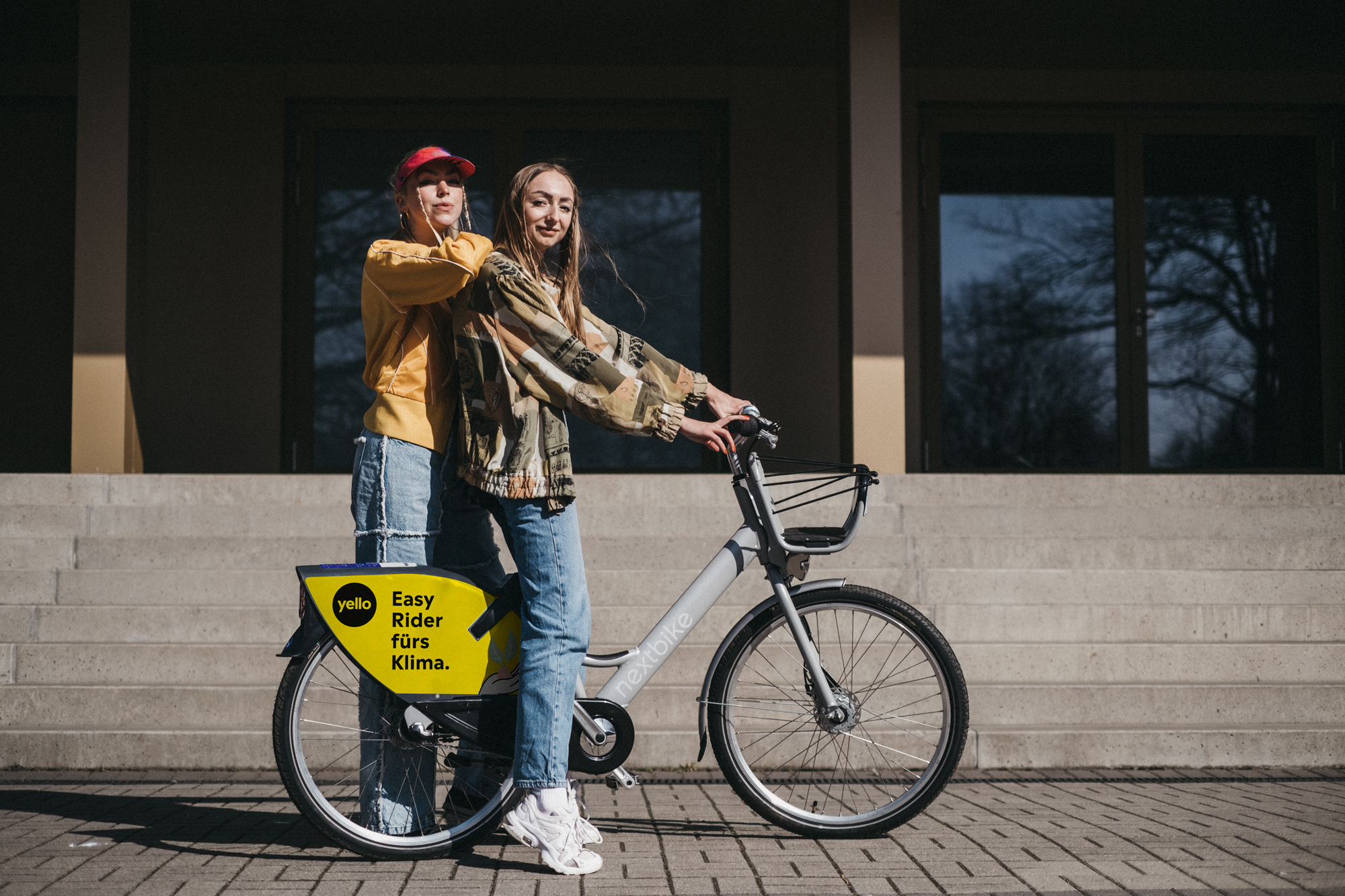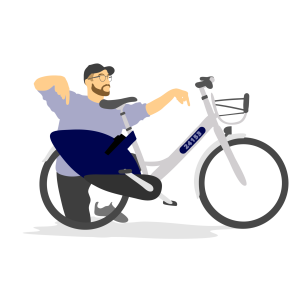We see from our inquiries that the demand for performance values has increased significantly in recent years. OOH is becoming more and more relevant in the media mix, spending is fortunately increasing and of course clients and agencies want to know what performance they are getting for their budget. We were therefore also asked to consider how we could offer our customers performance values for our media at nextbike.
Q & A Performance values for nextbike

That's exciting, how did you go about it? It's not exactly trivial for mobile advertising media like your nextbikes, is it?
Yes, that was exactly the challenge. Our bikes, eBikes and eScooters collect thousands of contacts every day, which are generated at the stations, within the flex zones and, above all, during the ride. We therefore made a conscious decision to look for a partner and commission the study externally. We found this partner in Senozon from Switzerland and together we developed a survey model that works as a good approximation for our medium and forms the basis for our performance values.
How exactly does this survey work?
We initially selected 28 of our nextbike service cities for the survey. At the time of the survey in 2020/21, this was around 80% of our marketable cities.
Assuming that the use of rental bikes is subject to seasonal fluctuations, we defined a winter and a summer period as the analysis and measurement intervals.
We then collected all rental transactions of all bikes in the defined 28 cities. (The start and end time as well as the start and end location for each analysis day).
Senozon knows how and when people move around in public spaces and collected data for the analysis days on the basis of Telefonica mobile phone data, anonymized it and extrapolated it to the total population. This method is called “mobility recognition pattern”. This gave us precise information about the number of passers-by within a maximum of 25 meters of our parked bikes within a 60-second interval during the course of the day.
That's a lot of data! What insights did you gain when you saw the results?
One could generally assume that the figures are in similar proportions to the size of the city or the number of inhabitants. However, this is not the case, as the figures are based on the number of bikes and their rental volume.
If bikes are rented out less and are often located in central locations (e.g. train stations), then their gross contacts are naturally much higher than bikes that are often rented out and then left on the outskirts of the city after use, for example.
So more bikes also means more contacts. And it also plays a role how many people are in the service area. This includes not only the resident population of the city, but also those who visit it (e.g. commuters).
In summary, this means that
- the locations of the parked bikes
- the rental behavior
- the number of bikes and
- the number of pedestrians moving around the service area (and also where they move around) are the decisive factors for the gross contact opportunities.
In addition, we achieve higher gross contact opportunities in winter than in summer. This is because fewer rentals are generated in winter and the bikes therefore have longer downtimes. As a practical solution for the day-to-day business of media planners, we have decided to offer an average value for both periods. However, anyone interested in the summer and winter figures in detail is welcome to contact us to take a look at the tables together.
From a desk perspective: What do you recommend to planners and/or clients on how best to handle your data?
We deliberately refer to our performance values as gross contact opportunities, because we can assume a contact opportunity with the advertising medium on the basis of a passage situation, the 25m mentioned above.
On average, we have 1,877 contact opportunities per bike and day across all locations.
At the same time, we know that our bikes generate far more contacts on the road than our figures can document. Planners therefore have the option of using the daily value or calculating the total gross contact opportunities based on the number of planned bikes and the duration.
In addition to the gross contact opportunities, we also determined the net contact opportunities and arrived at an average OTS of 1.6-2, which is plausible and in line with a target group-optimized OOH campaign. The net contact opportunities were not calculated over the entire period, but only on a daily basis. The reason for this is data protection regulations, which do not allow Senozon to track the movement data of individual persons for longer than 24 hours.
If the CPM comes into play, however, planners will quickly realize that we are far below the usual benchmark values for OOH campaigns with this indicator, regardless of whether gross or net consideration is used. We are aware of this, but we have decided to stick to the agreed data collection logic and do not want to scale artificially here.
Our occupancy recommendations are also not based on the CPM or optimized for it, but are based on the fleet strength at the location and the duration in order to achieve the campaign objective in the best possible way. We therefore recommend documenting the campaign performance with the gross contact opportunities and, if necessary, the OTS.
Have we forgotten anything else?
That was essentially it. We know that inquiries and customer requirements are very individual. Some need more, others need fewer figures. Our sales team will be happy to help you find the right answer.
Our comprehensive data and reports on rentals, distances cycled and CO2 savings potential offer our customers great added value. We look forward to further campaigns.
